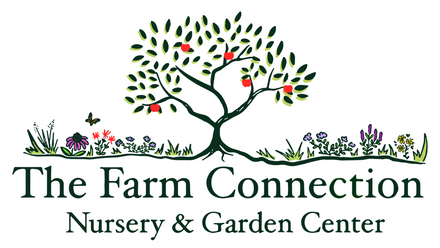Chestnut, Chinese, Bare Root
Blight-Resistant Nut Tree for Food & Shade
Chestnut, Chinese, Bare Root - Bare Root / 6-18" Seedling is backordered and will ship as soon as it is back in stock.
Couldn't load pickup availability
Delivery and Shipping
Delivery and Shipping
Make sure to thoroughly review our entire "Shipping, Returns, Refunds, and Our Guarantee" page for all relevant details about ordering from our store.
Making a purchase from our store constitutes an agreement to all the conditions outlined in those policies.
We appreciate your support and look forward to being your favorite plant provider!
Subscribe to our newsletter
Sign up for exclusive offers.
Chestnut, Chinese (Castanea mollissima)
Chinese Chestnut is a resilient, productive nut tree that combines dependable yields with excellent disease resistance, especially to chestnut blight. Native to China and long cultivated for its delicious, starchy nuts, Castanea mollissima grows into a spreading, medium-sized tree with dense foliage, fragrant spring catkins, and heavy fall nut crops. The sweet, easy-to-peel chestnuts are prized for roasting, baking, and long-term storage. In regenerative agriculture systems, Chinese Chestnut is a valuable overstory tree, offering food, shade, wildlife support, and soil-building leaf litter in food forests, silvopasture, and reforestation plantings.
Key Characteristics
-
Blight-resistant and reliable nut producer
Unlike American chestnut, Chinese Chestnut has strong natural resistance to chestnut blight and performs well even in regions where the disease is present. It produces nuts reliably with minimal disease management, making it one of the most dependable chestnut species for North America. -
Sweet, nutritious nuts for food and storage
The nuts are high in complex carbohydrates, low in fat (compared to other nuts), and can be roasted, boiled, dried, or ground into flour. Sweet and starchy, chestnuts are an excellent perennial staple crop for homesteaders and agroforestry systems. -
Excellent for silvopasture and permaculture systems
With its wide canopy and deep roots, Chinese Chestnut fits beautifully into silvopasture, providing high-quality shade for animals while dropping valuable food crops in the fall. It also plays a key role in the canopy layer of food forests and alley cropping systems. -
Supports wildlife and beneficial insects
The spring catkins are a food source for pollinators, while the dense foliage offers shelter for birds. The nuts feed deer, turkeys, squirrels, and other wildlife, making it a multifunctional tree in restoration plantings and habitat corridors. -
Requires cross-pollination for nut production
While some trees may produce a small crop alone, planting at least two genetically distinct trees ensures abundant nut set. Chestnuts begin bearing in 5–7 years and are long-lived, rewarding investments for regenerative land stewards.
Product Details
- Sun requirements: Full sun
- Soil requirements: Medium, well-drained, slightly acidic; dislikes heavy clay or wet soils
- Mature height: 40–60 ft
- Bloom time: Late spring to early summer
- Bloom color: Creamy yellow catkins
- USDA Hardiness Zones: 5–8
- Pollination requirements: Requires another chestnut tree for cross-pollination
- Fruit type: Edible nut (encased in spiny burrs, drops in fall)
- Nut uses: Roasting, boiling, drying, flour, animal forage
Chinese Chestnut is a cornerstone species for regenerative farms, homesteads, and food-producing landscapes—offering delicious nuts, habitat, and ecological resilience in a single, low-maintenance tree.
-
Sun RequirementsFull Sun
-
Soil RequirementsMedium, Medium-Dry
-
Bloom ColorWhite, Yellow
-
Bloom TimeJune, July
-
USDA Hardiness ZonesZone 4, Zone 5, Zone 6, Zone 7, Zone 8
Payment & Security
Payment methods
Your payment information is processed securely. We do not store credit card details nor have access to your credit card information.




